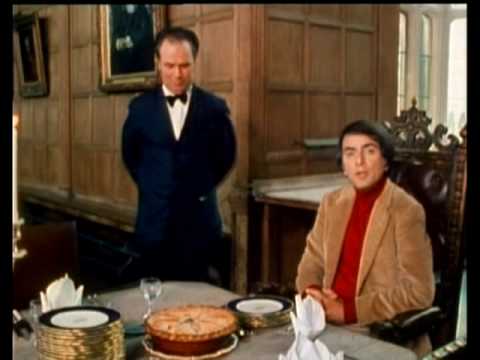I certainly hope you’ve seen this already, but if you haven’t, you really should check out the Symphony of Science project that autotunes Carl Sagan to create a truly magnificent video, A Glorious Dawn.
I’m not going to lie to you, I cried a bit watching that. Of course I also cry when I hear the music from Gojira.
But before you listen to Carl’s song, I want you to recall the stopsign solar system project I did earlier.
As it turns out, I wasn’t entirely correct in some of the details. As a recap, if the sun were the size of a stopsign, then the Earth would be about a block and a half away, and the nearest star would be on the other side of the planet, somewhere in China.
Here’s where I was wrong: Alpha Centauri is not the nearest star to Earth. It is the nearest star system. Alpha Centauri is, strictly speaking, three stars, or a trinary system. If I were to make a scale model of Alpha Centauri out on Clarkson Rd. and 53rd St., I would have two suns, each slightly larger than a stopsign, one of which would be at Clarkson Rd. and 53rd., and the other would be roughly the distance of Saturn’s orbit, or down near 49th Street. These two stars orbit each other roughly every 80 years, but for the microscopic humans living on the lima-bean-sized Earth over in China, these two suns (Alpha Centauri A and Alpha Centauri B) would look like a single, reasonably bright star in their sky.
The nearest star to Earth is Proxima Centauri, the supposed companion to Alpha Centauri A and B. Proxima Centauri is about 12,000 AU away from the other pair, so by the stopsign scale it would be out by Birmingham, Alabama. A significant distance, but hardly China.
Now here is why I brought this up. This next piece of information is going to help you put the universe into a still more accurate perspective, thereby allowing you to appreciate Carl Sagan’s autotuned lyrics that much better. Here it is, the core concept:
The nearest star to Earth is not visible with the naked eye.
Proxima Centauri is a red dwarf, a relatively small and cool star. Red dwarf’s are some of the oldest stars in the universe because they’re so small. The hydrogen convects throughout their mass, fusing into helium in a slow and even manner that will gently smolder for billions upon billions of freaking years. Essentially until something really horrible happens to the universe in general.
It’s believed that red dwarfs make up the majority of the universe, but they only say that because we see a good deal of them in our immediate stellar neighborhood. Red dwarfs are too dim to be seen at any large distance from Earth, even with the most powerful telescopes, so it’s just a reasonable guess that they’re everywhere.
You may have heard the theory of the Nemesis Star. It’s possible that our solar system has a red dwarf companion the same way Alpha Centauri does, a star somewhere beyond the oort cloud that causes periodic showers of extinction-causing comets. Now you’re probably thinking, how could there be a star out by our stellar Birmingham, and nobody knows about it? Well, think about it, you’re the size of a microbe and you’re standing out on Clarkson, looking in the direction of Birmingham, or even just Bastrop. You’re only going to see something half the size of a stopsign if it’s pretty damn bright.
Question of the day. What’s the most famous recurring comet we know of? It’s Halley’s Comet: http://www.scientificamerican.com/gallery/is-seeing-a-comet-like-halley-s-a-once-in-a-lifetime-event/
But that’s why we have powerful telescopes and sky mapping software. If there is a Nemesis Star, it’s already been mapped and recorded. We just don’t know how far away it is. With red dwarfs it’s hard to calculate their distance because of their low luminosity. The Nemesis Star could have fallen between the cracks. A star in a haystack of stars.
So I hope that gives the universe a little more depth. Now go and listen to Carl Sagan, and when he mentions the galaxy-rise of 400 billion stars, remember that most of those stars are so dim that their light was lost in the great darkness before even their closest neighbors could see it.
 Mood: Amused ]
Mood: Amused ] Currently: Listening to CBC Radio ]
Currently: Listening to CBC Radio ]
 Mood: Silly ]
Mood: Silly ] Mood: Fed Up WIth Life ]
Mood: Fed Up WIth Life ]
 Mood: Hypnotized ]
Mood: Hypnotized ]